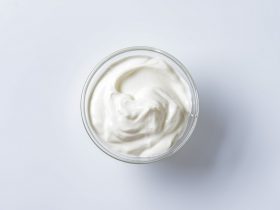Fish and other seafood are an important part of a healthy, balanced diet during pregnancy. However, effects of mercury exposure can be devastating to a developing fetal brain. Therefore, pregnant women must remain cautious and vigilant about which types of fish have lower mercury content and are safer for them to eat.
Catfish is an edible type of fish that is consumed all over the world. It has low mercury content and is safe for consumption during pregnancy, as long as it has been properly cooked.
Jesmarie Macapagal, RN, MD, DPPS
What is a Catfish?
Catfishes are a type of fish that has long barbels (or feelers), which resemble cat whiskers. They may also have spines in front of their fins that have venom glands and can cause painful injuries. They are related to the characins, carp and minnows.
Majority of catfishes live in fresh water, but a few can be found in the sea. They are bottom dwellers and are more active at night than day. They are also considered as scavengers as they can feed on almost any kind of animal or vegetable matter.

According to the Environmental Defense Fund (EDF), channel catfish are the most popularly farmed fish in the United States, and account for two-thirds of aquaculture in the United States in 2003. They are native to the Southeast USA and are raised in eco-friendly ponds.
Catfish is a good source of vitamins and minerals, including thiamin, vitamin B12, niacin and vitamin D, and phosphorus, potassium and selenium.
Is Catfish Safe for Pregnant Women to Eat?
In 2010, Chen et al. documented 221 species of Listeria from 60 catfish fillets and 3 catfish processing plants. Of these isolates, 86 were identified as L. monocytogenes.
Still, catfish is categorized under the “Best Choices” list for seafood consumption during pregnancy according to the US Food and Drug Administration (FDA). Pregnant women can eat 2 to 3 servings per week of various fish belonging to this list.
As shown in the US FDA data, the average mercury concentration in catfish is 0.024 parts per million (ppm). This is considered a “low” level of mercury content as the designated limit is 0.1 ppm. Additionally, channel catfish have low mercury content and are given a “Best” eco-rating by the EDF.
The Pros and Cons of Eating Seafood During Pregnancy
Pros of Eating Seafood
Seafood is an excellent source of nutrients that are essential for proper fetal and child neurodevelopment. These include iodine, vitamin B12, iron, vitamin D, zinc, manganese, and polyunsaturated fatty acids (PUFA) omega-3 and omega-6 (Schwarzenberg et al., 2018).
Seafood consumption during pregnancy can help women achieve optimal amounts of intake of these key nutrients. Bonham et al. in 2009 revealed that pregnant women who met the recommendations for these nutrients had significantly higher seafood consumption that those who did not.
In 2014, Chen et al. reported that maternal intake of an average of 450 grams of seafood per week during pregnancy resulted in an increased IQ by 0.79 to 5.7 points in their offspring. Hibbeln et al. in 2019, likewise, concluded that consumption of a variety of seafood during pregnancy was associated with better neurocognitive development in their offspring, compared to no seafood consumption. This benefit was seen beginning at the lowest amount of seafood intake (4 ounces per week) and continued through the highest amounts (more than 12 ounces and up to 100 ounces per week).
Moreover, those who consume seafood were regarded as having healthier diets as they were found to have higher intake of key nutrients and lower intake of sugar and saturated fats (Hu & Chan, 2021).
The benefits of seafood consumption are generally ascribed to the long chain PUFA eicosapentaenoic acid (EPA) and docosahexaenoic acid (DHA) (Brantsӕter et al., 2017). These fatty acids pass through the placenta to reach the fetal circulation (Amezcua-Prieto et al., 2018).
According to Imhoff-Kunsch et al. in 2012, intake of omega-3 PUFAs during pregnancy results in a slight increase in birth weight. Similarly, in 2018, Amezcua-Prieto et al. indicated that an average consumption of a minimum of 29 grams per day during pregnancy, or 2 to 3 servings per week, decreased the risk of having a small for gestational age (SGA) infant, compared with an average seafood consumption of lower than 8 grams per day.
In addition, consumption of omega-3 PUFAs during pregnancy results in reduced risk of early preterm birth (Imhoff-Kunsch et al., 2012). This is similar to the findings of Brantsӕter et al. in 2017, where it was shown that pregnant women who had any seafood intake above no or rare consumption were found to have decreased chances of delivering premature babies.
Cons of Eating Seafood
Mercury Exposure
Seafood is also a source of environmental contaminants, including dioxins, polychlorinated biphenyls (PCBs), and mercury (Amezcua-Prieto et al., 2018). Mercury is a neurotoxin, to which fetuses are highly susceptible, that is present in essentially all seafood (Hibbeln et al., 2019).
Mercury is mainly present in large, oily fish (Vejrup et al., 2016). Some kinds of seafood, in particular fish that are predatory like shark, swordfish, king mackerel and tilefish, contain high amounts of mercury.
If pregnant women keep eating these high-mercury fish regularly, over time, the mercury can accumulate in their bloodstream. High levels of mercury exposure can be detrimental to a baby’s developing brain and nervous system.
Mercury is able to cross the placenta and can lead to alterations in fetal neurodevelopment. Mercury exposure above 2.6 micrograms per day (or 0.29 microgram/kilogram body weight/week) was found to be associated with delayed language and weaker communication skills (Vejrup et al., 2016).
However, Chen et al. in 2014 indicated that the benefits of fish intake outweighed the risks for pregnant women, if they consume different types of fish in moderation. Likewise, Hibbeln et al. in 2019 reported no net adverse neurocognitive outcomes even with the highest amounts of seafood consumption, in spite of associated increase in mercury exposure.
Listeriosis
Listeria monocytogenes is a food borne pathogen that causes listeriosis, an infection which has a high mortality rate. In the United States, laboratory-confirmed cases of bacterial infections led to 552 deaths, of which 30 percent were due to listeriosis. Listeria also had the highest overall case fatality rate at 16.9 percent (Barton Behravesh et al., 2011).
L. monocytogenes is found on the surfaces of fish. It is heat-resistant and multiplies at refrigeration temperatures. Previous studies have shown that as much as 25 percent of frozen seafood was found to be contaminated with this bacterium (Akgul et al., 2017).
Eating contaminated food is considered the main route of transmission of acquired human listeriosis (Hof, 2003). L. monocytogenes particularly infects pregnant women, neonates, the elderly and those who are immunocompromised (Jeffs et al., 2020). Pregnant women are at greater risk, and estimated to be 18 times more likely to develop listeriosis, compared to the general population because of the natural immunosuppression of pregnancy (Mateus et al., 2013).
Maternal illness during pregnancy is usually mild, but illness in the newborn is mostly severe and fatal (Jeffs et al., 2020). Listeriosis during pregnancy can lead to abortion, fetal demise, or neonatal morbidity as septicemia and meningitis (Mateus et al., 2013).
Neonatal listeriosis occurs via vertical transmission from mother to fetus. L. monocytogenes can be transmitted through the following routes (Jeffs et al., 2020):
- “Inhalation of infected amniotic fluid,
- Trans-placentally from the maternal circulation, or
- By ascending colonization during birth”
In 2017, Charlier et al. found that among 107 cases of pregnancy-related listeriosis, maternal to fetal transmission happened in 96 percent of cases, while 24 percent led to fetal death. Meanwhile, Jeffs et al. in 2020 reported that neonatal listeriosis has an overall case fatality rate of 50 percent. Of those who survive, 40 percent were observed to suffer severe neurological and developmental sequelae (Sapuan et al., 2017).
Recommendations for Seafood Consumption During Pregnancy
The European Food Safety Authority (EFSA) Scientific Committee recommends an intake of 1 to 4 servings of seafood per week during pregnancy. Meanwhile, other international organizations recommend either an intake of 1 to 2 servings of seafood per week to provide 200 milligrams of omega-3 PUFAs DHA and EPA, 2 to 3 servings of seafood per week from the “Best Choices” list, or 1 serving per week from the “Good Choices” list (Amezcua-Prieto et al., 2018).
The US FDA, the Environmental Protection Agency (EPA), as well as the 2015-2020 Dietary Guidelines for Americans (DGA) recommend that pregnant women consume 8 to 12 ounces (up to 340 grams) weekly of a variety of seafood that are lower in mercury content. That is the same as about 2 to 3 servings of seafood per week.
The EFSA Scientific Committee, likewise, recommends that seafood species containing high mercury be limited in the daily diet of pregnant women. The Spanish Agency for Consumer Affairs, Food Safety and Nutrition also advise pregnant women to “eat a wide variety of fish, but avoid swordfish, fresh tuna, pike and shark,” which are considered high-mercury containing species (Amezcua-Prieto et al., 2018).
Other Recommendations:
- Do not eat uncooked fish and shellfish – oysters, sushi or sashimi, and seafood labeled as nova style, lox, kippered, smoked or jerky
- Watch out for local fish advisories – when eating fish from local waters
- Cook seafood thoroughly
When cooking seafood, an internal temperature of 145 degrees Fahrenheit (or 63 degrees Celsius) must be achieved. The flesh of fully cooked fish is firm and separates into flakes and looks opaque throughout.
According to the US FDA, cooking to a safe minimum internal temperature kills any harmful bacteria. “Using a food thermometer is the only way to ensure the safety of seafood for all cooking methods.”
Final Thoughts
Pregnancy nutrition is an essential intervention for optimal fetal and child health. While seafood is an excellent source of key nutrients that are needed for a baby’s developing brain, pregnant mothers must be careful and avoid consuming species that have high mercury content.
Catfish is under the “Best Choices” list for seafood consumption during pregnancy. It is low in mercury and is a good source of necessary nutrients for fetal growth and development. It can be safely eaten by pregnant women as long as it was properly cooked to an internal temperature of 145 degrees Fahrenheit.
Individualized advice for each pregnant mother is best achieved through proper consultation with a dietitian or health care provider. They are the best resource of information to ensure the safety and wellness of both the mother and her baby.
References
- https://www.britannica.com/
- https://www.mayoclinic.org/
- https://www.fda.gov/
- https://seafood.edf.org/
- https://www.fda.gov/
- https://www.fda.gov/
- https://nutritiondata.self.com/
- https://www.fda.gov/
- Akgul, A., Al-Janabi, N., Das, B., Lawrence, M., & Karsi, A. (2017). Small molecules targeting LapB protein prevent Listeria attachment to catfish muscle. PLOS ONE 12(12), e0189809.
- Amezcua-Prieto, C., Martinez-Galiano, J. M., Salcedo-Bellido, I., Olmedo-Requena, R., Bueno-Cavanillas, A., & Delgado-Rodriguez, M. (2018). Maternal seafood intake and the risk of small for gestational age newborns: A case-control study in Spanish women. BMJ Open 8(8), e020424. doi: 10.1136/bmjopen-2017-020424
- Barton Behravesh, C., Jones, T., Vugia, D., Long, C., Marcus, R., Smith, K., …, & FoodNet Working Group. (2011). Deaths associated with bacterial pathogens transmitted commonly through food: Foodborne diseases active surveillance network (FoodNet), 1996-2005. The Journal of Infectious Diseases 204(2), 263-267. doi: 10.1093/infdis/jir263
- Bonham, M., Duffy, E., Robson, P., Wallace, J., Myers, G., Davidson, P., …, & Livingstone, M. B. (2009). Contribution of fish to intakes of micronutrients important for fetal development: A dietary survey of pregnant women in the Republic of Seychelles. Public Health Nutrition 12(9), 1312-1320. doi: 10.1017/S136898000800387X
- Brantsӕter, A. L., Englund-Ӧgge, L., Haugen, M., Birgisdottir, B. E., Knutsen, H. K., Sengpiel, V., …, & Meltzer, H. M. (2017). Maternal intake of seafood and supplementary long chain n-3 poly-unsaturated fatty acids and preterm delivery. BMC Pregnancy and Childbirth 17, 41. doi: 10.1186/s12884-017-1225-8
- Charlier, C., Perrodeau, É., Leclercq, A., Cazenave, B., Pilmis, B., Henry, B., …, & MONALISA Study Group. (2017). Clinical features and prognostic factors of listeriosis: The MONALISA national prospective cohort study. The Lancet: Infectious Diseases 17(5), 510-519. doi: 10.1016/S1473-3099(16)30521-7
- Chen, B., Pyla, R., Kim, T., Silva, J. L., & Jung, Y. (2010). Antibiotic resistance in Listeria species isolated from catfish fillets and processing environment. Letters in Applied Microbiology 50(6), 626-632. doi: 10.1111/j.1472-765X.2010.02843.x
- Chen, M. Y., Wong, W. W., Chung, S. W., Tran, C. H., Chan, B. T., Ho, Y. Y., & Xiao, Y. (2014). Quantitative risk-benefit analysis of fish consumption for women of child-bearing age in Hong Kong. Food Additives & Contaminants: Part A, Chemistry, Analysis, Control, Exposure & Risk Assessment 31(1), 48-53. doi: 10.1080/19440049.2013.855947
- Hibbeln, J., Spiller, P., Brenna, J. T., Golding, J., Holub, B., Harris, W., …, & Carlson, S. (2019). Relationships between seafood consumption during pregnancy and childhood and neurocognitive development: Two systematic reviews. Prostaglandins, Leukotrienes and Essential Fatty Acids 151, 14-36. doi: 10.1016/j.plefa.2019.10.002
- Hof, H. (2003). History and epidemiology of listeriosis. FEMS Immunology and Medical Microbiology 35(3), 199-202. doi: 10.1016/S0928-8244(02)00471-6
- Hu, X. F., & Chan, H. M. (2021). Seafood consumption and its contribution to nutrients intake among Canadians in 2004 and 2015. Nutrients 13(1), 77. doi: 10.3390/nu13010077
- Imhoff-Kunsch, B., Briggs, V., Goldenberg, T., & Ramakrishnan, U. (2012). Effect of n-3 long-chain polyunsaturated fatty acid intake during pregnancy on maternal, infant, and child health outcomes: A systematic review. Paediatric and Perinatal Epidemiology 26 Suppl 1, 91-107. doi: 10.1111/j.1365-3016.2012.01292.x
- Jeffs, E., Williman, J., Brunton, C., Gullam, J., & Walls, T. (2020). The epidemiology of listeriosis in pregnant women and children in New Zealand from 1997 to 2016: An observational study. BMC Public Health 20, 116. doi: 10.1186/s12889-020-8221-z
- Mateus, T., Silva, J., Maia, R., & Teixeira, P. (2013). Listeriosis during pregnancy: A public health concern. ISRN Obstetrics and Gynecology 2013, 851712. doi: 10.1155/2013/851712
- Sapuan, S., Kortsalioudaki, C., Anthony, M., Chang, J., Embleton, N., Geethanath, R., …, & Vergnano, S. (2017). Neonatal listeriosis in the UK 2004-2014. The Journal of Infection 74(3), 236-242. doi: 10.1016/j.jinf.2016.11.007
- Schwarzenberg, S. J., Georgieff, M., & COMMITTEE ON NUTRITION. (2018). Advocacy for improving nutrition in the first 1000 days to support childhood development and adult health. Pediatrics 141(2), e20173716. doi: 10.1542/peds.2017-3716
- Vejrup, K., Schjølberg, S., Knutsen, H. K., Kvalem, H. E., Brantsӕter, A. L., Meltzer, H. M., …, & Haugen, M. (2016). Prenatal methylmercury exposure and language delay at three years of age in the Norwegian Mother and Child Cohort Study. Environment International 92-93, 63-69. doi: 10.1016/j.envint.2016.03.029




